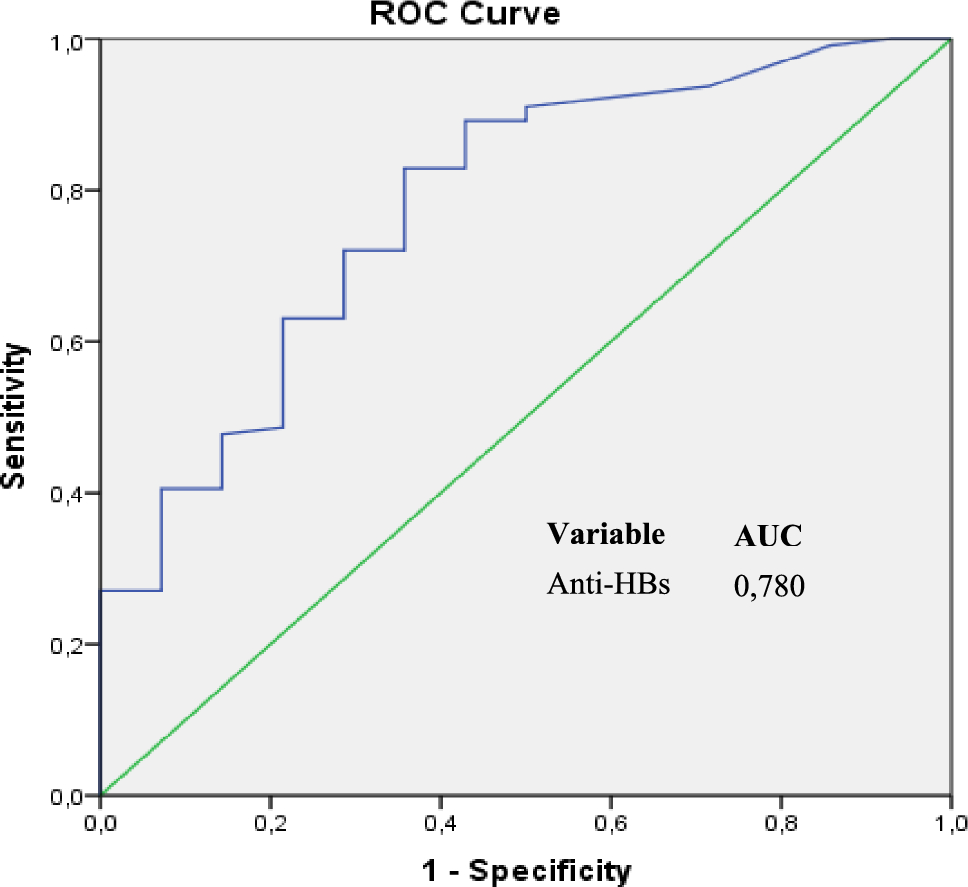We are now on track to achieve HBV elimination by 2030
Published in Public Health
The striking theme of the campaigns, “One life, one liver,” draws attention to hepatitis B (1). Although hepatitis B (Hep B) vaccine is generally administered to newborns in the world, what is the level of access to the vaccine in economically low-income countries?
With the hope that this issue will be addressed on other platforms, I would like to touch on the protection of the vaccine here. previous studies, the protection rates of Hep B (Anti-HBs titer ≥ 10 mIU/mL) were at different levels; rates such as 85-90% (2), 24.9% (3), 52.4% (4) were found 10-31 years after HBV vaccination.
In our recent study, this rate was 55.4% 18-26 years after the first HBV vaccination series(5).
In the meantime, if we want to briefly touch on our study process, we can say the following:
Of course, since our region is a relatively more common area in terms of HBV, we felt like taking action. What was this curiosity? An average of 26 years had passed since the first HBV vaccination series in our country.
In this case, the question of whether protection against HBV still continued came to mind. For this, the maximum age group we could reach was 26 and the minimum age group was 18.
Of course, there were important problems here.
The most important of these are the exclusion of those who had previously received an additional dose of HBV vaccine from the study, whether they adapted to the additional vaccination during the study period, and the invitation of individuals back to the study center to determine their antibody levels within 4-6 weeks after the additional dose of vaccination.
For this, all individuals had to be invited by phone, and in case of any miscommunication, they had to be reminded again.
For all this, we were dividing the workload and cooperating as study managers. Each of us would inform the other, either face to face, by phone or via E-mail.
In the meantime, it is necessary to establish close communication with the central laboratory for serum samples. We can say that the most important thing is strong communication, progress within a program and discipline so that there are no problems or deficiencies.
Studies on the protection provided by the Hep B vaccine after 20-30 or 40 years are ongoing. It is suggested that if the Anti-HBs titer reaches ≥ 10 mIU/mL after vaccination in infancy, the protection will continue for life, but additional Hep B vaccination is recommended especially for healthcare workers, physicians or dentists at low titers (Anti-HBs titer < 10 mIU/mL).
If the recommendation of the Centers for Disease Control and Prevention to have Hep B serology tested at least once starting at the age of 18, especially for those living in regions with medium-high HBV prevalence, is followed, individuals at risk will be provided with the opportunity to receive additional HBV vaccination when necessary (6).
Thus, success can be achieved in the fight against HBV in regions where HBV is relatively more prevalent, and the WHO's goal of "Hep B elimination" in 2030 will be achieved.
1-WHO. Hepatitis B, Fact sheets n.d. (2022) https://www.who.int/news-room/fact-sheets/detail/hepatitis-b. Accessed 9 October 2024
4-Ma JC, et al (2020) Long-term protection at 20–31 years after primary vaccination with plasma-derived hepatitis B vaccine in a Chinese rural community. Hum Vaccin Immunother 16:16–20.
5-Erdoğdu HI, et al. "Anti-HBs Levels 18–26 Years After the Initial Hepatitis B Vaccination Series in a Low-to-Medium Prevalence Region: Is a Booster Dose or a Second Vaccine Series Necessary?." Current Microbiology 82.5 (2025): 223.
6-Schillie S, et al (2013) Centers for Disease Control and Prevention (CDC). CDC guidance for evaluating health-care personnel for hepatitis B virus protection and for administering postexposure management. MMWR Recomm Rep 62:1–19
Follow the Topic
-
Current Microbiology

Current Microbiology is a renowned scientific journal committed to advancing Microbiology. It delves into the realms of prokaryotic and eukaryotic cells, viruses, and the intricate interplay among microorganisms, hosts, and their environment.
Related Collections
With Collections, you can get published faster and increase your visibility.
Recent perspectives into the removal of persistent organic pollutants using microbial consortium
Synthetic pollutants are increasing into the environment due to huge applications. These pollutants mainly include antibiotics, pesticides, steroids, phenolics, microplastics and many pharmaceuticals. The residual concentration of these chemicals were found enhanced in soil and water environments in recent decades. Synthetic pollutants caused severe toxic effects into the living systems. The microbial approaches were found effective for the removal of such toxic chemicals from the environment. Microbial removal of the toxic chemicals is an engineered process that applies the bacteria, fungi and algae to treat contaminated soil and water surfaces. In the last five decades, bioremediation technologies have been found effective for the treatment of hazardous waste. It is the application of the bacterial, fungi and algae for the cleaning up of the contaminated areas in the most economical and environmentally friendly manner.
The application of microbial bioremediation needs to be understood in depth with high-throughput research in the modern era. The reason to develop such smart technologies is continuous synthesis and increments of the new chemicals. Therefore, there is a constant need to discover new bioremediation methods to treat the contaminated environments. In addition, the application of indigenous microbial cultures increased due to the less energy and input required. Application of microbial strains can be utilized for the cleaning of the environment, sustainable developments, and resource recovery. Therefore, in this collection we would like to present the research on the bioremediation of the synthetic pollutants, which is the need of time. We are calling for research papers that can open new horizons for the application of microbial cultures in bioremediation.
The collection will cover the topic but not limited to the following:
1. Microbial bioremediation technologies developed to clean-up the contaminated sites
2. Isolation, identification and characterization of microbes and their potential abilities to degrade toxic pollutants
3. Autochthonous and allochthonous microbial consortium and their degradation capabilities of multi-pollutants
4. Applied omics approaches involved into the degradation of the toxic pollutants
5. Microbial engineering for the removal of the toxic chemicals from the environment
6. Novel metabolic pathway involved into the remediation of the synthetic pollutants
Publishing Model: Hybrid
Deadline: Dec 31, 2025
Novel Prokaryotic Taxa
Publishing Model: Hybrid
Deadline: Ongoing




Please sign in or register for FREE
If you are a registered user on Research Communities by Springer Nature, please sign in